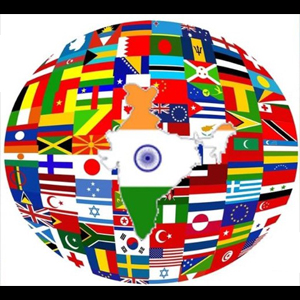IndiaScope: Strategic Autonomy and Its Limits

The Russia-Ukraine war forced a re-articulation of Indian foreign policy. While India’s de-facto policy has been a sort of extension of prior non-alignment, the Ukraine situation has called for greater clarity. Armed with an External Affairs minister, S. Jaishankar, who has become something of a superstar during this time for his poise, intellect, and articulate defense of India’s stance, India is confronting how, exactly, to describe its foreign policy in the new era.
India’s fabled non-alignment (albeit with a decided tilt towards the Soviets), which allowed safe navigation through the Cold War years, expanded comfortably in the post-Cold War period to accommodate greater closeness with the U.S. However, the Ukraine crisis accelerated the need for India to take sides in various settings such as the United Nations—and if it didn’t, to repeatedly defend its position. In so doing, there’s been a consolidation of India’s foreign policy, one which works adequately and offers leverage for now, even as it raises many questions.
To some, the current “strategic autonomy” or “strategic independence” was but another term for nonalignment. Others criticized it more openly as rather being “strategic ambivalence,” despite Jaishankar’s artful responses to interrogations about where exactly India stood. Its “realist” balance puts Indian interests first and foremost, allowing India to explain its lack of active condemnation of Russia’s invasion. India feels that its past history with a tried and trusted friend, its dependence on Russia for its military technologies, weapons systems and their components, its historical aversion to Western imperialism, should all be understood and accepted by the world, as these are balanced by its gentle condemnation of Russia, its willingness to speak truth to power, as it were, and its importance as broker, influencer, and mediator.
There’s also a persistent feeling, not just on the part of India but in many parts of the Middle East and Africa, that the era of U.S./NATO dominance and rulesetting looks increasingly like over-reach in a multipolar world. Privately, they feel that If a dominant U.S. can squeeze a major world actor (and their occasional ally) like Russia out of existence in global arenas and bring its economy to ruin, what would it do to them if their interests crossed a perceived line?
It’s also true that so far the U.S. doesn’t really have an alternative but to accept India’s position—it is too important of a partner in the Quad (the strategic alliance of the U.S., Australia, India, and Japan), providing the bulwark against a resurgent China. And so India has not really received great Western pushback against its “autonomous” foreign policy.
But there are limits, as the current situation shows. Russia’s new status as international pariah has made its relationship with China much stronger and more dependent. In light of this, can India continue to count on Russian assistance if things deteriorated with China? The U.S. has specifically raised this scenario in New Delhi in seeking to push India away from Russia. But India is not convinced that the U.S. could necessarily be counted upon either. In the past, the U.S. threatened, Indians will point out, while the Russians helped when India needed help.
Meanwhile, the scenario of worsening relations with China is already here. If the India-China skirmish in Galwan, with casualties on both sides, seems fresh, it’s because it is. I remember driving across Mumbai and seeing angry billboards aimed at China’s treacherous incursion. That was 2020. Since that time, tensions are rising even as talks continue, and border skirmishes keep breaking out. Two recent outbreaks happened in December 2022 and January 2023.
Both India and China have an interest in not allowing these tensions to escalate, even if Galwan disturbed a long-held equilibrium. India’s reaction continues to be low-key, focusing on their existing economic relationship. Both Modi and Xi have reasons for wanting to move forward: China is fighting a mammoth Covid outbreak that is putting Xi’s grip on the country to the test; India has an urgency in moving its economy forward, and it is preoccupied with hosting the G20 summit this year. Measured responses may be reassuring, but the changes in the India-China relationship are worrisome, and may ultimately force a greater calibration of what “strategic autonomy” means. When push comes to shove, who will show up as India’s ally? The answer today, unlike in past decades, is not as clear.

Tinaz Pavri is Professor of Political Science and Director of the Asian Studies Program at Spelman College, Atlanta. A recipient of the Donald Wells Award from the Georgia Political Science Association, she’s the author of the memoir Bombay in the Age of Disco: City, Community, Life.
Enjoyed reading Khabar magazine? Subscribe to Khabar and get a full digital copy of this Indian-American community magazine.
blog comments powered by Disqus










